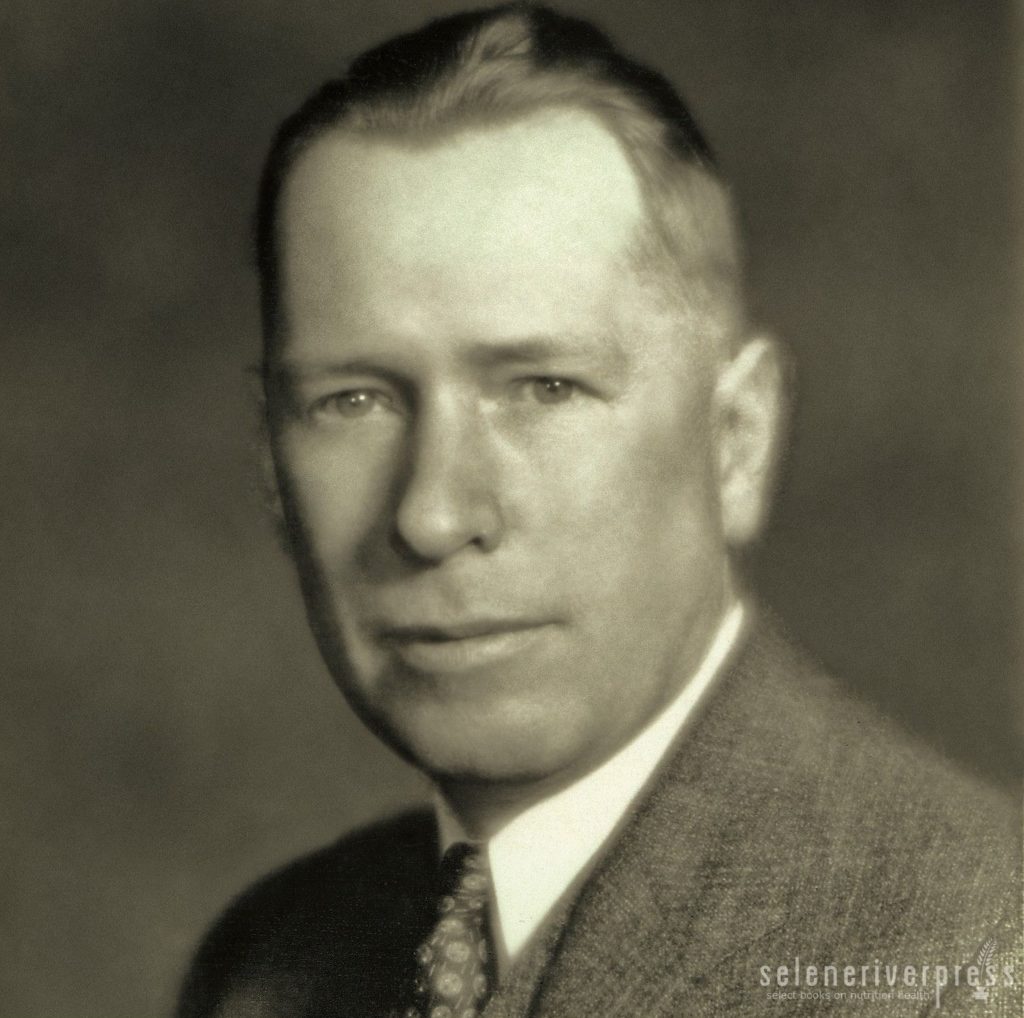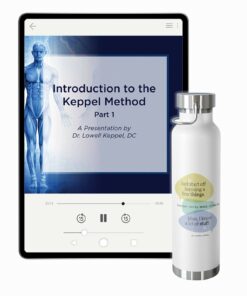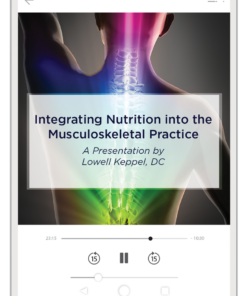Enjoy the latest installment of Dr. Lowell Keppel’s Tip of the Month series by Dr. Royal Lee for practitioners.
From 1957 to 1967, Dr. Royal Lee published his Applied Trophology newsletter specifically for practitioners who were utilizing Standard Process whole food concentrates. Upon his passing, the newsletter went on hiatus for a couple of years, but Standard Process Laboratories started up its publication again in 1970 and it ran for much of that decade.
Today, the Applied Trophology newsletter is available free at the Selene River Press Historical Archives. I highly recommend you take the time to read one issue per day.
“Tip of the Month” was a regular short feature that ran during the first four years of the newsletter’s publication. All of these tips are straight from Dr. Lee. To inspire you, this “Good to Know” will feature Dr. Lee’s monthly tips from the first volume of the newsletter, published in 1957.
But first, for those of you who may not know much about the great Dr. Royal Lee, let’s look at a quick overview of his career. Early on, Dr. Lee repaired and developed dental equipment, which made him curious to know more about dentistry. Inspired to go to back to school, he obtained his Doctor of Dentistry from Marquette University in 1924. A mere five years later, he created Catalyn, a complete whole food concentrate. Eventually, Dr. Lee came to be known as one of the greatest minds in the field of whole food nutrition. In 1941 he started the Lee Foundation for Nutritional Research to share his knowledge with the world. In his spare time Dr. Lee continued to invent and obtain over 70 patents for his mechanical and electrical engineering endeavors.
Now, without further ado, let’s look at all of Dr. Lee’s tips from the very first volume of Applied Trophology, published in 1957:
Tip of the Month (Cramps)—January 1957
“Cramps may be due to not only a lack of calcium (best supplied as lactate for this purpose) but to a deficiency of vitamin B6. This vitamin promotes the formation of vitamin F (unsaturated fatty acids) from protein…Babies get convulsions from B6 deficiency. Dr. Paul Gyorgy said recently, ‘Deprivation of B6 results in epileptiform seizures in all species, including man’…B6 has long been known to relieve vitamin F deficiency symptoms (skin lesions) in test animals, though less effectively than the vitamin F. Without vitamin F the muscle cell fails to get calcium from the blood. Result: fatigue, cramps, loss or diminution of the second sound of the heart (due to heart muscle impairment).”
Interestingly, Dr. Lee goes right to calcium issues, giving us a wealth of information in just a few sentences. He notes that, along with calcium, a deficiency in B6 may also contribute to cramps. B6 helps promote vitamin F, so if you’ve encountered some frustration moving calcium to the tissues, consider B6-Niacinamide to help accomplish this goal.
Click here for the complete January 1957 issue of Applied Trophology.
Tip of the Month (High Blood pH)—February 1957
“A high blood pH (normal is 7.3–7.5) tends to throw calcium out of solution in the body fluids, and bursitis, arthritis, neuritis, lumbago, sciatica, and a host of other painful syndromes develops as a consequence.”
Here again, Dr. Lee shows the importance of calcium being in the proper place, noting all the conditions that can occur when alkalinity forces calcium out of the body fluids.
Click here for the complete February 1957 issue of Applied Trophology.
Tip of the Month (Virus Infections and Vitamin E)—March 1957
“Where a virus infection persists—whether it’s a cold, fever blisters, canker sores, or shingles—try shock doses of vitamin E complex: 4 tablets three times per day. The first day’s treatment usually does the trick.”
Here Dr. Lee gives us a great tip for viruses that are hanging around: Cataplex E! How did he know these things?
Click here for the complete March 1957 issue of Applied Trophology.
Tip of the Month (X-Ray Burn Treatment)—April 1957
“Use Vitamin F Ointment [USF Ointment] externally and Epithelial Cytotrophic Extract [Dermatrophin PMG] internally for X–ray burns, no matter of how long standing. You will see results in progressive improvement.”
We don’t typically see patients with X-ray burns anymore, but what about radiation treatments and sunburn?
Click here for the complete April 1957 issue of Applied Trophology.
Tip of the Month (Menopausal Hot Flashes)—May 1957
“The hot flashes of menopause respond best to Organic Iodine [Prolamine Iodine] and Vitamin F [Cataplex F Tablets]. (Wheat Germ Oil in some cases is synergistically important.) The condition is due to excess thyrotropic hormone from a pituitary gland that has lost the inhibiting influence of the ovary.”
Again, great tip! Notice Dr. Lee explains that hot flashes are related to excess thyroid hormone, and iodine suppresses excess thyroid function. Cataplex F Tablets put iodine to work. Interesting!
Click here for the complete May 1957 issue of Applied Trophology.
Tip of the Month (Waning Sex Drive)—June 1957
“For the patient who complains of waning sex drive (nutritional castration), suggest capsules of the fat-soluble Chlorophyll Complex, with its vitamins A, E, F, and K. We will refund the price to you for any patient who fails to report a lift on a schedule of four capsules a day. (And remember that vitamin K deficiency is suspected to be one important cause of coronary disease. Chlorophyll Complex protects us from harm from the hydrogenated fats and synergizes in this respect with the vitamin F.)”
Now, I am not sure if Standard Process today will honor Dr. Lee’s promise of a refund of Chlorophyll Complex. However, I think it might be interesting if any of you find they do!
Click here for the complete June 1957 issue of Applied Trophology.
Tip of the Month (Hot Weather)—July 1957
“Hot weather requires a replacement of the blood salts we lose in all osmotic water elimination. Take a half teaspoon of Carbamide [A-C Carbamide] in a glass of water once or twice a day, use Upjohn’s Citrocarbonate now and then, and use Vitamin F Tablets [Cataplex F Tablets] if you are much exposed to sun. Vitamin F is the antidote to excess vitamin D, stops sunstroke in its tracks. Use Calcium Lactate for the fatigue of hot weather, with the vitamin F.”
Here Dr. Lee gives us the insight that Cataplex F Tablets are an antidote to too much vitamin D—which many people think is not common.
Click here for the complete July 1957 issue of Applied Trophology.
Tip of the Month (Asiatic Influenza)—August 1957
“As a preventative and to counteract the expected invasion of the Asiatic influenza virus, we suggest A-C-P Complex [Cataplex A-C-P], Calcium Lactate, and Carbamide [A-C Carbamide]. Many cold and virus remedies fail because of lack of carbamide, a deficiency that stems from low-protein diets.”
We’ve talked about viruses, calcium, and Cataplex C, but notice this tip about A-C Carbamide. Who would have thought to use this product for fighting viruses of all types?
Click here for the complete August 1957 issue of Applied Trophology.
Tip of the Month (Celery Root)—September 1957
“Celery root (celeriac) supplies glutamine, which, according to a note in Cosmopolitan (November 1955), stops the craving for alcohol. (Celeriac is used to impart a flavor to soups and is sometimes cooked in vinegar as a vegetable.) Glutamine, which is too unstable to be available as a concentrate, acts as a physiological buffer to maintain a close regulation of blood pH. It is good for allergic tendencies and neuritis because such patients are usually over alkaline. Alkalinity is easily corrected by Cal-Amo Tablets. (See Applied Trophology, Vol. 1, No. 2.)”
Very interesting about celery and glutamine!
Click here for the complete September 1957 issue of Applied Trophology.
Tip of the Month (Check pH)—October 1957
“When patient doesn’t respond to treatment check the saliva pH. The low pH requires baking soda, potassium bicarbonate, or Upjohn’s Citrocarbonate. A high pH calls for our Cal-Amo tablets, one per meal after eating. (Refer to Applied Trophology, Vol. l, No. 2.)”
It’s important to balance the pH. Dr. Lee knew this could otherwise be an inhibiting factor to the patient responding to treatment.
Click here for the complete October 1957 issue of Applied Trophology.
Tip of the Month (Iodine Sensitivity)—November 1957
“Iodine sensitivity may be corrected by niacin…Vitamin B6 and vitamin F also cooperate. (See Lee Foundation Reports Nos. 1 and 3.)”
Many patients are sensitive to iodine, a condition known as iodism. Dr. Lee gives us some clues on how to correct it. Parotid PMG is also beneficial.
Click here for the complete November 1957 issue of Applied Trophology.
Tip of the Month (Potassium Deficiency)—December 1957
“Potassium deficiency may prevent the normal response in chronic fever patients taking Calcium Lactate. During the critical period, try ¼ teaspoonful of Potassium Bicarbonate per day, in water, in addition to the Calcium Lactate.”
What a great tip! Potassium cooperating with calcium to bring down fever. I have done this several times for patients who were not responding, (Because Standard Process no longer makes their Potassium Bicarbonate, you can use E-Z Mg.)
Click here for the complete December 1957 issue of Applied Trophology.
We just reviewed the first year of Dr. Lee’s “Tip of the Month.” Like I said, read one issue of Applied Trophology per day. With so much information to apply to your practice, you’ll be happy you did!
Main image from SRP. Post images from iStock/diego_cervo (woman on the bed), fizkes (woman fanning herself).






